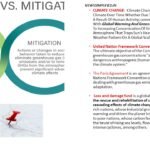2,40,000 nano plastic fragments in a One-litre bottle of water

In the new study, using newly developed laser technology, published in the journal Proceedings of the National Academy of Sciences, researchers from Columbia University have found that a single plastic bottle, typically 1 liter, contains over 2,40,000 tiny nanoplastic fragments. Though the presence of microplastics in a plastic bottle of water is a known fact, new research has finally brought to light the number of nanoplastic particles one can expect to consume in plastic bottles.
Polyethylene terephthalate (PET) emerged as one of the most prevalent, followed by nylon among the various nanoplastic types identified in the analysis of the study.
LEARNING WITH TIMES/AT HOME/WITHOUT CLASSES/BASICS
Single-use plastics, often also referred to as disposable plastics, are commonly used for packaging and include items intended to be used only once before they are thrown away or recycled. These include, among other items, grocery bags, food packaging, bottles, straws, containers, cups, and cutlery. Such plastics are problematic because they are not biodegradable.
Microplastics – are defined as plastic particles under 5 millimeters that come from industrial effluent, textiles, synthetic car tires, personal care products, and other sources.
Nano plastics, measuring less than 1 micrometer. Unlike microplastics, nanoplastics possess the ability to traverse the digestive and respiratory systems, entering the bloodstream.
PLASTIC FACTS
- As it belong to a chemical family of high polymers, they are essentially made up of a long chain of molecules containing repeated units of carbon atoms. Because of this inherent molecular stability (high molecular weight), plastics do not easily break down into simpler components.
- Due to its the non-biodegradable nature , it is quite dangerous to make our environment polluted with plastics as they will not break down into simpler compounds and get absorbed into the air water, or soil as beneficial components.
- It eventually photo-degrade, i.e. break down into smaller and smaller fragments by exposure to the sun. The photo-degradation process continues down to the molecular level, yet photo-degraded plastic remains a polymer. No matter how small the pieces, they are still and always will be plastic, i.e. they are not absorbed into or changed by natural processes. Plastic becomes microscopic, invisible, yet ever-polluting waters, beaches, coasts, and seafloor, being eaten by even tinier marine organisms, therefore entering the food chain insidiously and ineluctably.
- In landfills, toxic chemicals from it drain out and seep into groundwater, flowing downstream into lakes and rivers.
- Wildlife becomes entangled in it , they eat it or mistake it for food and feed it to their young, resulting in impaired movement and feeding, reduced reproductive output, lacerations, ulcers, and death.
- Coral reefs which are living growing organisms are also affected fatally. Its debris causes physical breaking off and suffocating of these coral reefs by not allowing sunlight to reach them.
- Ecosystem changes as species are wiped out and alien species take over adapting to the environment.
- Toxic chemicals leach out of it (bisphenol-A or BPA, phthalates.) and are found in the blood and tissue of nearly all of us. Exposure to them is linked to cancers, birth defects, impaired immunity, endocrine disruption, and other ailments.
It is a petroleum product; to truly divest from fossil fuels, we must reduce our collective plastic footprint. More and more awareness and preventive programs need to be promoted which should ultimately lead us toward better choices in term of consumption and waste management of plastic at an individual level.







0 Comments